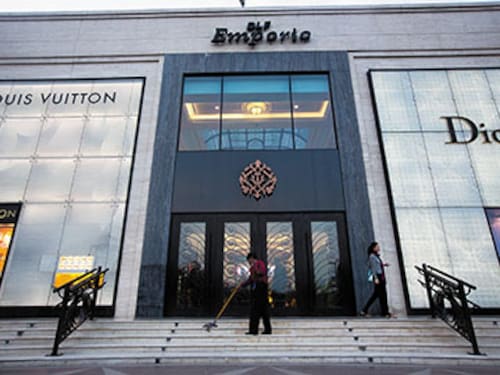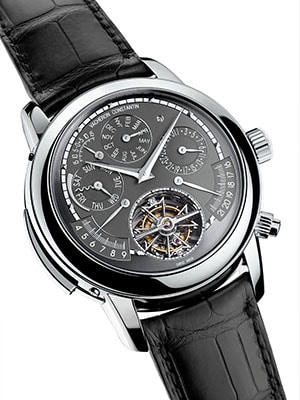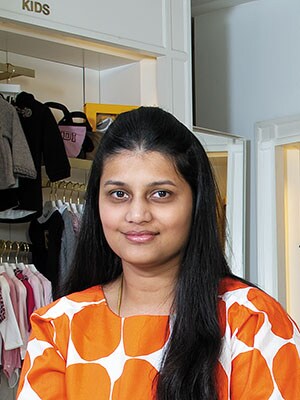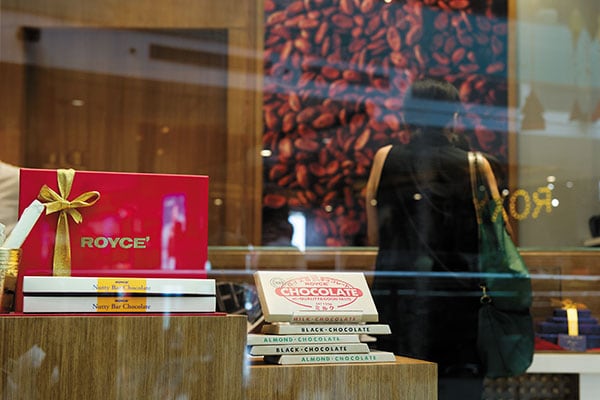Spoilt for choice: Luxury has made its home in India
The affluent Indian's desire for 'the good life' has lured the world's biggest luxury brands to the country despite the real estate and regulatory quagmire


India continues to miss a Rodeo Drive or an Avenue Montaigne—we’re not quite there yet—but barring a road dedicated to über luxury, there is little that the upscale shopper here can complain about. Walk into Delhi’s DLF Emporio in Vasant Kunj or Mumbai’s Palladium in Lower Parel—the top-of-mind shopping destinations—and there’s a veritable smörgåsbord of options to feast—or even just snack—on.
Luxury has made its home in India. From Armani to Chanel and Ermenegildo Zegna to Vacheron Constantin, renowned global brands have set up shop here. And not only in the obvious categories of apparel, accessories, home decor, watches, wines and jewellery, but also in fine dining, concierge services, travel and yachts. According to a February report by KPMG-Assocham, India’s luxury market grew at a healthy 30 percent to reach $8.5 billion in 2013, and is likely to grow at 20 percent to $14 billion by 2016. The report states that this growth has been primarily driven by lifestyle segments such as fine dining, gadgets, hotels, jewellery, personal care and wines, as consumers refused to compromise on the ‘luxe’ life.
India’s luxury potential has attracted several brands to the country in recent years. Some others such as Godiva Chocolatier and Fabergé Jewellery plan to start operations shortly. Additionally, some firms such as Villeroy & Boch and Bvlgari, which had earlier exited India, are showing renewed interest in the market. This momentum has been driven by an ever-increasing base of ultra high-net worth households (HNHs), which are likely to grow at 27 percent till 2017-18.
Those that are retailing in India are of the opinion that the profile of the customer has changed noticeably over the last decade. For one, there is a lesser diffidence about living the good life. “Today, customers want to reward themselves. They want to feel good about themselves, their position, and show it to friends and family. The mentality has changed,” says Rishab Suresh, country manager at luxury watchmaker Vacheron Constantin. “There has been an increase in wealth amongst new generation entrepreneurs, and they are willing to look at options beyond the obvious,” he adds.
Also, the market is no longer restricted to metros. Around 70 percent of luxury handbag-maker Judith Leiber’s customers now come from tier-2 and -3 cities, and this is without depending on store-based expansion, says the KPMG-Assocham report. Instead, Judith Leiber’s local partners showcase select products to potential consumers through exhibitions.
Currently, Indian luxury consumption constitutes only 1-2 percent of the global luxury market. However, a significant increase in high net-worth individuals (HNIs) and the overall rise in disposable incomes places India among the top global destinations for luxury. This, however, does not imply ease of doing business in the country.  The on-ground Challenges
The on-ground Challenges
The problems are multifold. To begin with, the India partner, who brings in the brands, needs to be patient as it could take 5-10 years (with exceptions though) for a business to become sustainable. Plus, the presence of luxury brands is concentrated only in malls, high streets and upscale hotels. There are limited luxury malls (among them DLF Emporio, Palladium, Bangalore’s UB City and the latest entrant, Kolkata’s Quest) in India, and setting up stores in high streets affects the retailer’s profitability due to sky-rocketing rentals. Also, luxury retail demands an exclusive ambience.
More significantly, despite the momentum in demand, India is not seen as a regulations-friendly place to do business in. Case in point: Import duties (that range from 20–150 percent) are much higher here, and is a key deterrent for international luxury players. The counterfeits epidemic poses another challenge. The ‘fakes’ constitute about 5 percent of the Indian luxury market and have been growing at a rate almost double that of genuine products.
Notwithstanding these issues, the malls are alive with the sound of luxury—and here are some of the businesses that are making the most of the music.
Genesis Luxury
Owner: Sanjay Kapoor
Corporate office: Gurgaon
Brands brought into India between 2010 and 2014
Michael Kors: 4 stores across Delhi, Mumbai, Bangalore and Kolkata
Villeroy & Boch: 3 stores across Mumbai, Bangalore and Kolkata opening shortly in New Delhi
Armani Group: Includes brands Giorgio Armani, Emporio Armani, Armani Jeans 10 stores across Delhi, Mumbai, Kolkata and Bangalore
Furla: 3 stores across Delhi, Mumbai and Kolkata
Crabtree & Evelyn: 7 stores across Delhi, Mumbai, Kolkata, Bangalore, Chennai and Pune
Tumi: 4 stores across Delhi, Mumbai, Kolkata and Bangalore
Burberry: 9 stores across Delhi, Mumbai, Bangalore, Kolkata, Hyderabad, Gurgaon and Chennai
Genesis, established in 2008, is India’s largest international luxury conglomerate, and has brought brands such as Canali, Jimmy Choo, Bottega Veneta and Paul Smith to desi customers. Sanjay Kapoor, its managing director, says the decision to bring a particular brand is made after significant research on it and its target audience. “We see how the brand is performing globally and what potential it has in India. It is very important to remember that the Indian luxury consumer is an aware and well-travelled consumer who knows international trends and follows them closely,” he says.
Kapoor believes India is the next big destination for global luxury brands, at least for the next 10-15 years. Despite changes in consumption patterns in China, Russia or Europe, the Indian luxury market has been fairly consistent, he points out.
Will the advent of online shopping in India change the way luxury products are bought? Kapoor doesn’t think so, as people tend to enjoy the complete experience associated with a luxury purchase. “Hence, I personally see a lot of untapped potential in the years to come as more and more tier-2 and -3 cities embrace these brands once the retail set-up is in place,” he says.
There is nothing that’s holding the industry back, except availability of sufficient retail spaces that can house luxury. Consumer demand for most international brands is unparalleled here, adds Kapoor.

Prive Luxury
Owner: Swati Saraf
Corporate office: New Delhi
Prive Luxury owns Les Petit, a super luxury clothing, accessories and furniture outlet for kids, in New Delhi’s DLF Emporio. It houses brands such as Young Versace, Baby Dior, Fendi Kids, Miss Blumarine, Simonetta, Théophile & Patachou, among others.
Prive set its eyes on elite kids, while other companies went about targeting their parents. Les Petit, launched in 2011, has apparels and accessories ranging from Rs 7,000 to Rs 75,000. “By being multi-brand, we are able to offer more to a client than what we could by being a single brand,” says Swati Saraf, chief executive and director, Prive Luxury.
For no particular reason, says Saraf, about 60 percent of the sales are in the boys’ segment. “People come to us when they want to buy something for their children for an occasion,” she says. Saraf plans to stick to the Delhi market for now, and look at other cities later.

Burgundy Hospitality
Owners: Avani Raheja and Samir Gadhok
Corporate office: Mumbai
Japan’s luxury chocolate maker Royce’ entered India in 2013 via Burgundy Hospitality. Currently, it has four outlets—two in Mumbai, one each in Bangalore and Delhi. By the end of this year, it plans to have a presence across all Indian metros.
Samir Gadhok, director at Burgundy Hospitality, says bringing a chocolate brand into India was a measured move. Luxury has two aspects, he points out: Lifestyle and ownership. And initially, it centred on owning products like cars, watches and clothes. “With Royce’, we are catering to a diversified group of people and connecting them through one product,” he says. “We are not selling a lifestyle we are selling the concept that anyone can have a moment of enjoying something special.”
Typically, fine chocolates are associated with Belgium or Switzerland. A Japanese brand seems like a gamble for an Indian company. Gadhok, however, counters this by pointing out that the Japanese are patient, long-term investors. “We were, so far, building the infrastructure as there are tons of backend issues involved in a product like chocolate,” he says. “A luxury brand can’t be monetised in two to three years. It’s a 10-year play. And our partners are cognisant of that fact.”
Kitsch / TSG International Marketing
Owners: Charu & Priya Sachdev
Corporate office: New Delhi
Home to some of the most iconic names in contemporary fashion, Kitsch brings under one roof brands including Chloé, Alexander McQueen, Diane von Fürstenberg, Stella McCartney and Yves Saint Laurent. Kitsch has two outlets—in Bandra in Mumbai and in Delhi’s Defence Colony—at present, and is now looking to open stores in Surat, Kolkata, Chennai and Ludhiana.
Besides the multi-brand outlets, Kitsch has also begun an online business to cater to customers beyond New Delhi and Mumbai. “There is tremendous wealth in the country it’s sad that people spend it overseas when they travel,” says Charu Sachdev, founder and chief executive, TSG International Marketing, which owns Kitsch.
For Sachdev, real estate is the biggest challenge. And she speaks from experience. She had pulled Kitsch out of a mall a few years ago after facing issues like a leaking ceiling and lack of trained resources. Also, she says, “Taxes are very high in India and that makes products expensive. We are reducing our margins as much as possible to be on par with global rates.”
To expand beyond fashion, Kitsch is introducing (in a small way) home accessories, jewellery and books. “We want to keep the customer interested. Cutlery is of interest for sure,” says Sachdev.
Reliance Brands
Owner: Reliance Industries
Corporate office: Mumbai
Brands brought into India between 2010 and 2014
Ermenegildo Zegna: 5 stores Looking to expand in Chennai and adding more stores in Mumbai
Paul & Shark: 4 stores, 6 shop-in-shops at The Collective, Palladium
Thomas Pink: 5 stores
Stuart Weitzman: 1 store, plans to add 1 more
Brooks Brothers: 6 stores, will add 1 shortly
Reliance Brands, a subsidiary of Reliance Industries, has six brands in its portfolio. (Disclaimer: Forbes India is published by Network 18 which is owned by Reliance Industries.)
Darshan Mehta, president and chief executive of Reliance Brands, says that luxury brands typically make money from the first piece of product they sell, as margins tend to be very high. “The challenge in India is that most brands can only come through an India partner,” he says. “While brands make their share of money by selling products to the India partner, making profit is a challenge for the India partner, who has to take care of taxes, rentals and salaries.”
Also, too many Indian partners are in a hurry to bring brands as it gives them an entry into a social club, says Mehta. “On wholesale prices, one can never make money. We need discounts. We can’t afford very large outlets. But global brands insist on a big store—of 5,000 sq ft. A store of this size will never make money,” he says.
Another big challenge, Mehta says, is that Indian customers tend to use physical retail stores as catalogues to browse through products, and end up buying goods from either London or Dubai due to the price difference which is sometimes as significant as 30 percent.
“The Indian rich like value and they don’t like to be cheated. We can’t have an up-charge of more than 5 percent to 10 percent compared with London and Dubai,” he says. Mehta, whose stores are profit-making from the eighteenth month onwards, thinks it is a myth that one can’t make money in luxury. “Senseless negotiations have been our bane,” he says.
First Published: Nov 10, 2014, 06:19
Subscribe Now